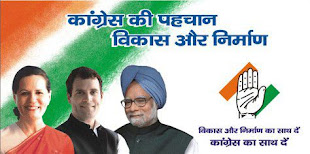Nirendra Dev
The global community and the world bodies like the United Nations time and again underline the need to focus on urgent national and international steps to be taken for ensuring education for the girl child. Hundreds of millions of young children, mostly girls, throughout the world are often deprived of education along with other essential needs like adequate food, clothing and health care. Going by these yardsticks, the development of a Nation is truly measured by many indicators and among them literacy levels especially of women and girl children are vital.
The literacy drive among the girl child would work as a catalyst for social uplift and thereby ensure National progress. Keeping this as the desired endeavour , eradication of illiteracy and bringing the girl child into the realm of education has been a major National concern for last so many decades.
Here, it would be only relevant to point to a publication by the Directorate of Adult Education, a few years back wherein a compendium ‘Literacy in India’ carried a cover page showing a young village girl holding the slate inscribed on it the words, “ab mein likh sakti hoon (Now I can write)”. The picture-story only rightly emphasizes on the importance of education for girl child and how gender inequity in literacy drive continues to remain a serious challenge.
In 1988, the Government of India undertook the National Literacy Mission. With a new sense of urgency, it gave upon itself and the Nation the seriousness and emphasis. In adult education with a fixed goal, clear time frame and well-defined target group. Today over 98 per cent of the districts in India have been covered under literacy campaigns and life long learning opportunities were being made available in more than 200 districts.
The National Literacy Mission had endeavoured to ensure functional literacy for all adult non-literates in the country. By the turn of 2001 there was an indication that overall literacy rate had shot up substantially.
The census of 2001 brought out certain facts those ought to be analyzed in totality and objectively. Although female literacy in India now stands at 54 per cent and is much higher than female literacy in Afghanistan, Pakistan or Bangladesh, it trails male literacy in India (76 per cent) by over 20 percentage points. It is in this context that there is great expectations from the Right to Education Act passed by the Government last year. Thanks to the new Act, all children aged 6-14 now have the constitutional right to receive a good quality education. The Plan rightly also includes proposals to upgrade existing schools and open new ones; train thousands of new teachers for a mandated 1:30 teacher-pupil ratio, and institute a 25 per cent reservation in private schools for minority students. But having said so there are several hurdles. Just to point out the oft-repeated statement, one needs to say that a mere legislation cannot ensure achieving the desired result.
Urbanisation in recent times has flooded a large number of cities, district towns and the metropolis with huge army of migrant workers. The education of the children of this workforce, especially the lower middle class and the poorer sections, often get neglected for practical reasons. The drop out rate is high among the female children throwing in added challenges. In general sense also, the studies have shown that among the poorer section, the poverty levels create a situation by which economic concerns remain at the centre of every activity for such families resulting in undermining the process of learning for the girl child.
But amid new challenges, one should not miss the sight of certain commendable achievements. Among the performing states, Kerala showed a female literacy rate of 88 per cent as against male (94 per cent), Mizoram 86 per cent as against the male literacy rate of 91 per cent and Lakshadweep 82 per cent (female literacy) and 93 per cent of male literacy.
Moreover, the campaigns like Education for street children has yielded positive results in cities like Mumbai. In the much-talked Total Literacy Campaign, in Mumbai around 76,000 volunteers set out at work. Moreover, apart from high influx and multi-linguality of the mega city, the pre-occupation of the learners posed other difficulties. The learners often had to travel a long distance and thus often showed the hurriedness to give up, yet the initiatives have yielded dividends. In some states, the literacy campaign linking to thrift activity and credit groups through the ‘Didi Bank Scheme’ also played a significant role.
Female education and the literacy drive have given the girl child the much-needed respect she has been striving. The real success story has been that it has mobilized people to think and to express themselves. The demand for a closer involvement between literacy and skill development training has also emerged.
But with everything said, it can be only emphasized that in days and months to come, the partnerships of literacy with professional and technical bodies as well as industry would have to be strengthened. All said and done, it ought to be admitted that nation building is a Herculean task and undertaking education and literacy drive among girls is a vital step. Future, they say belongs to dreamers, and there is a lot of merit in encouraging the women folk especially the girl child to dream about earning respect in the family and the society. Education for the girl child would therefore be a strong catalyst in ensuring what the Prime Minister Dr. Manmohan Singh emphasizes achieving the inclusive growth and development.


























0 Comments